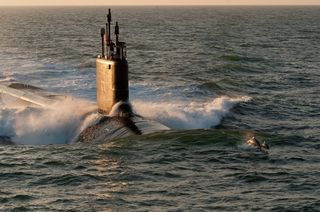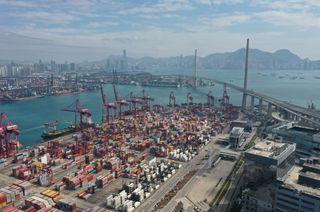ABC The Drum
US President Barack Obama again arrives in the Asia-Pacific, and given the thorny context of the region his visit can be judged by how well he delivers across four big goals, writes
US President Barack Obama has arrived in Japan on the first leg of a week-long trip to the region that will also take in South Korea, Malaysia and the Philippines. He is no stranger to the region — this will be his fifth trip here in the five years since he took office and by the end of this visit he will have been to 12 countries across the Asia-Pacific. And he plans to return again in November, stopping in China, Myanmar and Australia.
Nevertheless, sceptics still question American commitment in the region. In particular, they cast doubt on the president's signature foreign policy initiative to "rebalance" US attention and resources toward strengthened economic, diplomatic and security engagement with the Asia-Pacific.
While much of that criticism is inaccurate and overlooks the ongoing accomplishments of the rebalance, perceptions - even misplaced ones - do matter.
As such, this visit carries high expectations about future US leadership in this dynamic part of the globe. These expectations are further heightened with the upsurge in regional tensions ranging from an unpredictable North Korea, to territorial disputes in the South China Sea, to the deterioration in relations between China and Japan.
Given that thorny context, the success of president Obama's visit can be judged by how well he delivers across four big goals.
First, the White House will stress the American rebalance to the region is about much more than an enhanced military presence. For that reason, the president will put a lot of emphasis on economic, diplomatic, and people-to-people engagement.
Expect the president to promote US business ties in the region, highlight the successful Korea–US bilateral free trade agreement, and, looking ahead to a finalised Trans-Pacific Partnership trade deal, tout the benefits for America and the region arising from an even more open trade and investment environment.
On another front, the president will have a number of interactions with young people and civil society leaders in South-East Asia, including the launch of a Young Southeast Asian Leaders Initiative as a means to improve American connections to the region's future generations.
Second, stops in Malaysia and the Philippines aim to further underscore US engagement in South-East Asia. Long neglected by Washington, South-East Asia has received a great deal more attention as part of the rebalance, including an enhanced diplomatic profile and strengthened security relationships. With his trip to Malaysia (the first by a sitting American president since 1966) and the Philippines this week, president Obama will have visited seven of the 10 ASEAN countries.
Alliance-building is the third important objective for this trip. On the one hand, the president will need to reassure the three treaty allies - Japan, South Korea and the Philippines - about American commitments to their security.
This will be especially important for Japan and the Philippines, both currently embroiled in territorial disputes with China. But on the other hand, the president will also need to come away from the region having fostered greater solidarity between Japan and South Korea, countries whose ties have frayed in recent years.
Look for president Obama to meet with American and host-nation troops in the three countries, honour the sacrifice of veterans, and announce increased American troop rotations and new deployments of naval and air assets.
Finally, this trip will have to strike the right balance toward China. While not on the official itinerary, Beijing will be "in the room" for nearly every meeting president Obama holds. Washington has consistently tried to make clear that America, as part of its reenergised focus in this region, seeks a closer and more constructive partnership with China. Indeed, the long-term peace and prosperity of the region depends on it. This is a message and reality that needs to be carefully crafted and constantly nurtured. But it is not an easy task, especially with rising tensions involving China and American allies.
Success across these four objectives will go a long way to reassuring the region about America's continuing commitment to a stable, economically vibrant, and more just future for the Asia-Pacific. All in the region, from Beijing to Canberra, have a big stake in that success.
This article was originally published at ABC The Drum




